Mach 25 Management offers many exciting options for corporate team building and training.
-
High Performing Teams
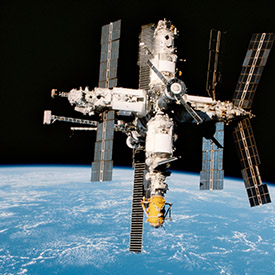 Great teams must combine strong communication, keen team awareness, and superb execution to achieve championship performance.
Great teams must combine strong communication, keen team awareness, and superb execution to achieve championship performance.Dr. Reilly uses his own NASA space mission experiences as a narrative for introducing the problems facing small teams in tight mission situations. He begins his sessions with the profiles and mission challenges faced by the NASA Space-Shuttle crews he flew with. He pulls no punches as he describes the conflicts, egos, jealousies, cultural differences, one-up-manships, and power plays that had to be resolved as mission teams were put together . . . . and how these were successfully resolved for flawless mission
As he tells each story, he will ask the team to think of how it is working together to identify and resolve conflict. For NASA teams “Failure is not an option.”
-
Developing a Mission Patch
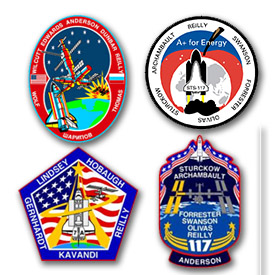 The one practical exercise that universally gets rave reviews from business teams is known as The Patching Exercise. One first big step toward creating team unity at NASA is the Patching Exercise, which brings all newly formed crew together to design the mission patch they will eventually wear on their uniforms in space.
The one practical exercise that universally gets rave reviews from business teams is known as The Patching Exercise. One first big step toward creating team unity at NASA is the Patching Exercise, which brings all newly formed crew together to design the mission patch they will eventually wear on their uniforms in space.The goal is develop a visual mission story of what that crew will do together in space. Every crew member participates in the patch design and these unique patches become real collector’s items. Creating the patch requires strong group participation and builds consensus around mission goals.
The exercise: Put together a snap-shot picture that visually tells the story of the organization’s mission.
-
Building Your Team to Push the Frontiers
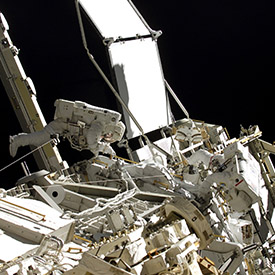 The group will have the opportunity to build 2 teams. JR will define the mission parameters for a flight to Mars. The objective will be to assess a select group of individuals for their potential to be a part of the flight crew for the Mars mission, and a second team to be the Mission Control team for the mission. Tools the group will use will be essentially the same as what we have for Astronaut selection: biographies, personal information gleaned from interviews, psychological profiles (in this case Myers-Briggs assessments), and the candidates desires and self-described strengths. What the group will not have will be names of the individuals since most of them will be well known to the participants. We will outline the requirements of the mission (Plan), describe the selection process (Brief), vote for the candidates and compile the results to assign positions on the teams (Execute), and then discuss what we discovered once we have our teams in their positions on the crew and in Mission Control (Debrief). Voting will be anonymous and the group will have the final say on whether to send the identified individuals on the 3-year voyage.
The group will have the opportunity to build 2 teams. JR will define the mission parameters for a flight to Mars. The objective will be to assess a select group of individuals for their potential to be a part of the flight crew for the Mars mission, and a second team to be the Mission Control team for the mission. Tools the group will use will be essentially the same as what we have for Astronaut selection: biographies, personal information gleaned from interviews, psychological profiles (in this case Myers-Briggs assessments), and the candidates desires and self-described strengths. What the group will not have will be names of the individuals since most of them will be well known to the participants. We will outline the requirements of the mission (Plan), describe the selection process (Brief), vote for the candidates and compile the results to assign positions on the teams (Execute), and then discuss what we discovered once we have our teams in their positions on the crew and in Mission Control (Debrief). Voting will be anonymous and the group will have the final say on whether to send the identified individuals on the 3-year voyage. -
The Columbia Accident Investigation Exercise: The Path to Primary Failure
 Dr. Reilly was deeply involved with the tragic loss of Space Shuttle Columbia in 2003 when the vehicle disintegrated during re-entry into the Earth’s atmosphere, resulting in loss of the shuttle and the death of all seven crew members. NASA had to face that tragedy and find the reasons for the failure.
Dr. Reilly was deeply involved with the tragic loss of Space Shuttle Columbia in 2003 when the vehicle disintegrated during re-entry into the Earth’s atmosphere, resulting in loss of the shuttle and the death of all seven crew members. NASA had to face that tragedy and find the reasons for the failure.One of the hallmarks of a great team is the ability to face failure and solve problems.
Using the Columbia accident as an example, Dr. Reilly will teach the team how to use a powerful diagnostic tool, the Ishikawa or “Fishbone” Diagram, to determine the most likely causes of failure. This technique may be used in almost any setting where the primary mechanism of failure is not known but some conditions before, during, or after are known.
The exercise is that a team will construct their own Fishbone Diagrams and evaluate the available information to decide on what would be the next steps in the investigation. Forced to deal with a system as complex as the space shuttle, team members will be assigned discrete areas to investigate and will have to communicate clearly and effectively with the other team members in order to decide on the next key steps in the investigation. The exercise will conclude with the recommended changes to avoid a repeat event.
The exercise promotes keen analysis techniques that rely on team interaction, resulting in the skill of making strong recommendations.
-
The Rocket Launch Exercise: Set Mission Goals, Assign Roles, Execute, and Debrief
 This exercise has been used very successfully with Continuous Improvement (CI) team training. Teams of three to four people are given the challenge of building water bottle rockets. The teams have to meet specific performance goals to be successful. Each team has to decide the roles of each member and each member provides a key component of the rocket design to the total team effort. The rockets are then launched and the results measured against the requirements. Teams review what worked well and what could be improved in a debrief after the event.
This exercise has been used very successfully with Continuous Improvement (CI) team training. Teams of three to four people are given the challenge of building water bottle rockets. The teams have to meet specific performance goals to be successful. Each team has to decide the roles of each member and each member provides a key component of the rocket design to the total team effort. The rockets are then launched and the results measured against the requirements. Teams review what worked well and what could be improved in a debrief after the event.The goal is to have fun while creating a collaborative effort within the team. This exercise can be expanded to include the use of Continuous Improvement tools to improve the design and results.
The key communication model for this exercise is the traditional military PBED model: Plan – Brief the Plan – Execute – Debrief
-
The Missile Warning Exercise: The Critical Element of Speed to Decision
Great teams can dig through tons of data and make robust decisions
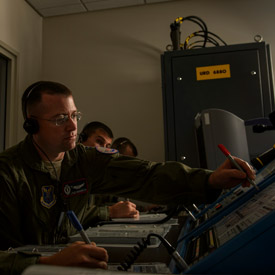 This exercise is modeled on the real-world activities of the U. S. Space Command and NATO missile warning teams. These teams have to obtain, interpret, decide and act on information to identify missile launches as being either peaceful or hostile in intent. They have by law only seven minutes to accomplish those tasks and make a decision. Obviously, strong teamwork, efficient and clear communication, and trust are an absolute requirement.
This exercise is modeled on the real-world activities of the U. S. Space Command and NATO missile warning teams. These teams have to obtain, interpret, decide and act on information to identify missile launches as being either peaceful or hostile in intent. They have by law only seven minutes to accomplish those tasks and make a decision. Obviously, strong teamwork, efficient and clear communication, and trust are an absolute requirement.To turn this into an organization exercise, four to six people will be given discrete tasks as part of the team to identify potential threats and recommend a course of action to the President of the United States and Secretary of Defense in sufficient time to allow the executive team to decide on whether to launch interceptors.
Business organizations must be able to make strong decisions and likewise prepare information that will help WWF leaders make correct, quick decisions.
-
The Search and Rescue (SAR) Exercise: Focus, Execute, and Get Strong Results
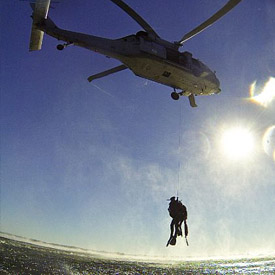 Search and Rescue in the Rockies is a challenging affair. A team of people will be charged with finding a lost child. We have used the beautiful Garden of the Gods park as the setting for one of these exercises but it can be arranged almost anywhere, to include territory in the Broomfield/Boulder area or around the local area of the team.
Search and Rescue in the Rockies is a challenging affair. A team of people will be charged with finding a lost child. We have used the beautiful Garden of the Gods park as the setting for one of these exercises but it can be arranged almost anywhere, to include territory in the Broomfield/Boulder area or around the local area of the team.Real SAR teams consist of a SAR Manager, SAR Techs, and a SAR Search Controller. Dr. Reilly first describes the roles and responsibilities within the SAR team, and then describes the search techniques. The team (s) will then define the roles and responsibilities for each team member and begin the search. The objective is to find the lost child as quickly as possible, using the skills they have learned in the SAR brief. Teamwork and communication is critical in successfully completing this exercise.
Mach 25 Management is proud to partner with and support these organizations:
 |
 |
 |
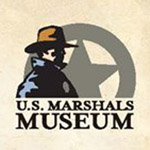 |
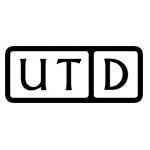 |
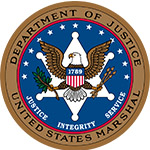 |
